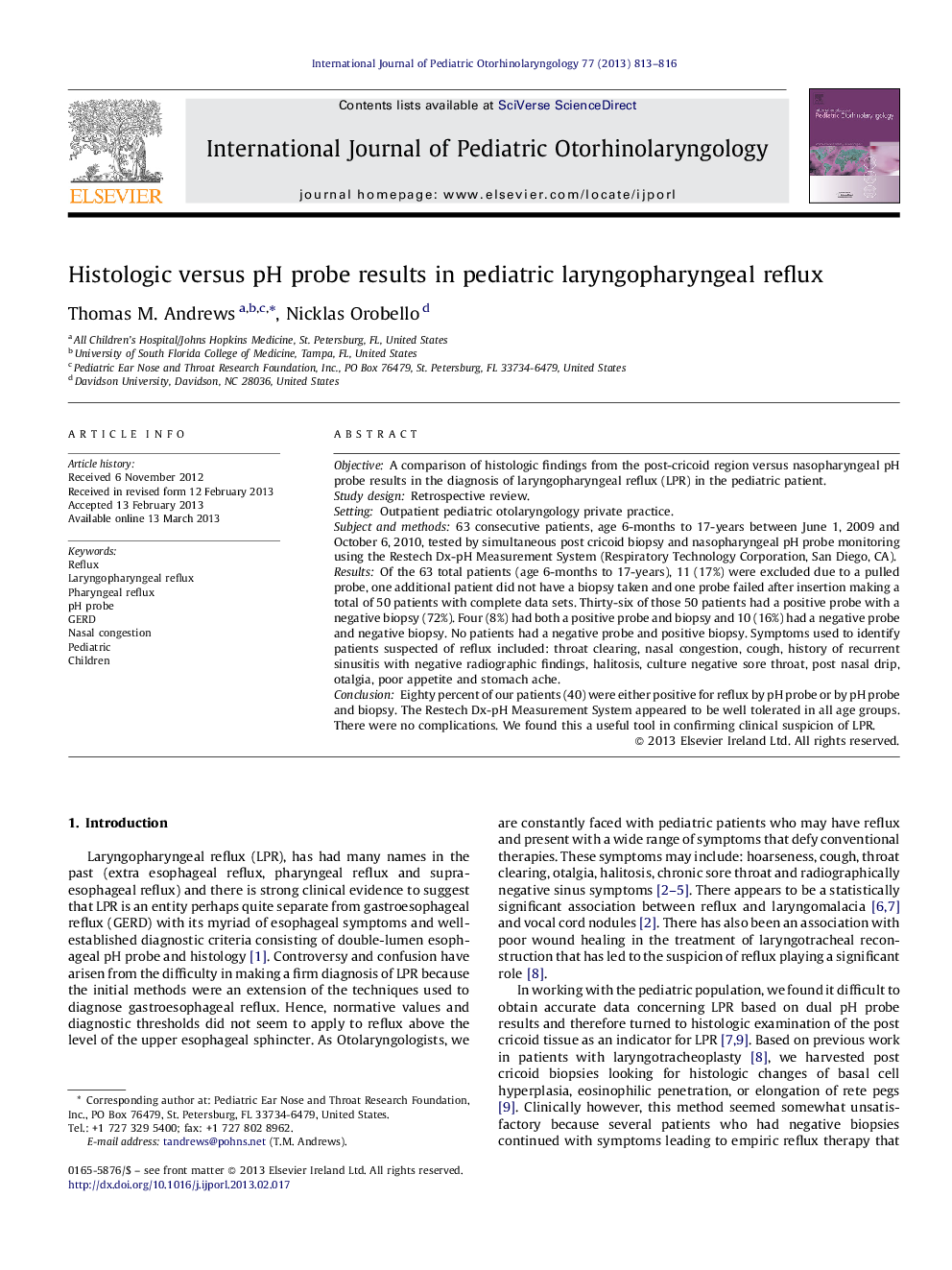| Article ID | Journal | Published Year | Pages | File Type |
|---|---|---|---|---|
| 4112639 | International Journal of Pediatric Otorhinolaryngology | 2013 | 4 Pages |
ObjectiveA comparison of histologic findings from the post-cricoid region versus nasopharyngeal pH probe results in the diagnosis of laryngopharyngeal reflux (LPR) in the pediatric patient.Study designRetrospective review.SettingOutpatient pediatric otolaryngology private practice.Subject and methods63 consecutive patients, age 6-months to 17-years between June 1, 2009 and October 6, 2010, tested by simultaneous post cricoid biopsy and nasopharyngeal pH probe monitoring using the Restech Dx-pH Measurement System (Respiratory Technology Corporation, San Diego, CA).ResultsOf the 63 total patients (age 6-months to 17-years), 11 (17%) were excluded due to a pulled probe, one additional patient did not have a biopsy taken and one probe failed after insertion making a total of 50 patients with complete data sets. Thirty-six of those 50 patients had a positive probe with a negative biopsy (72%). Four (8%) had both a positive probe and biopsy and 10 (16%) had a negative probe and negative biopsy. No patients had a negative probe and positive biopsy. Symptoms used to identify patients suspected of reflux included: throat clearing, nasal congestion, cough, history of recurrent sinusitis with negative radiographic findings, halitosis, culture negative sore throat, post nasal drip, otalgia, poor appetite and stomach ache.ConclusionEighty percent of our patients (40) were either positive for reflux by pH probe or by pH probe and biopsy. The Restech Dx-pH Measurement System appeared to be well tolerated in all age groups. There were no complications. We found this a useful tool in confirming clinical suspicion of LPR.
